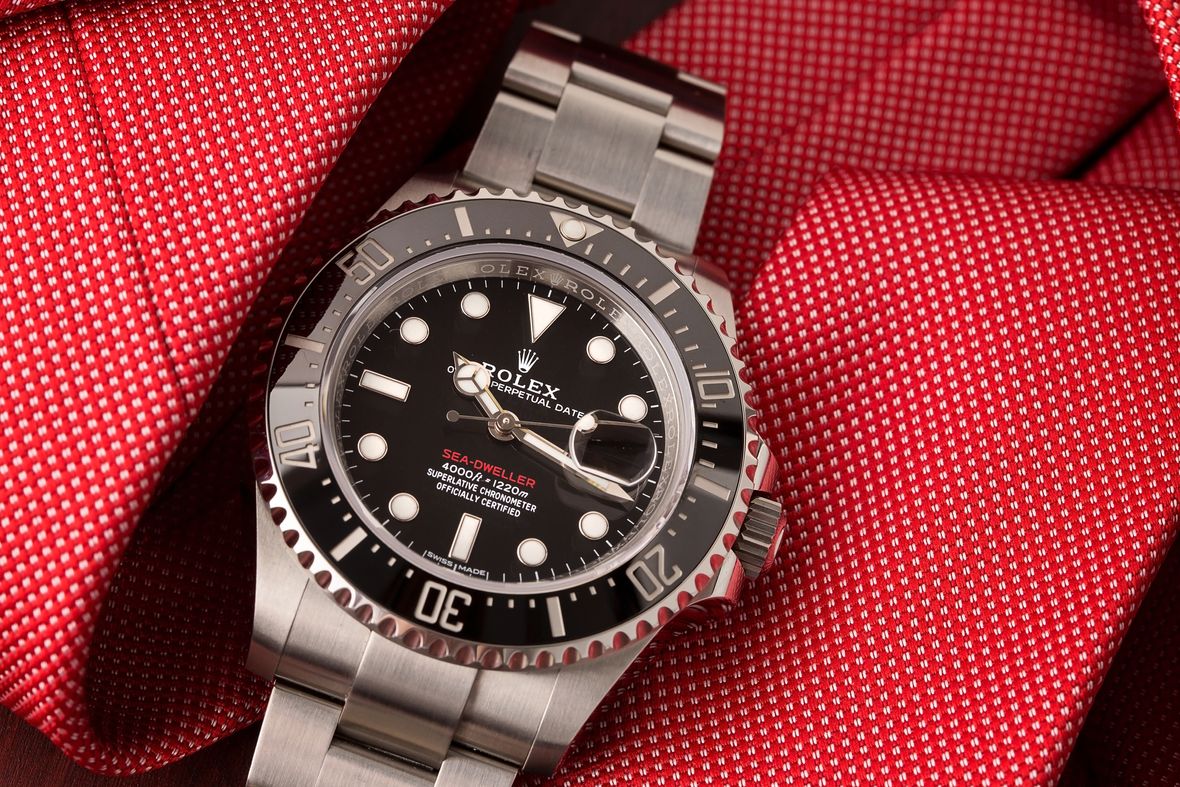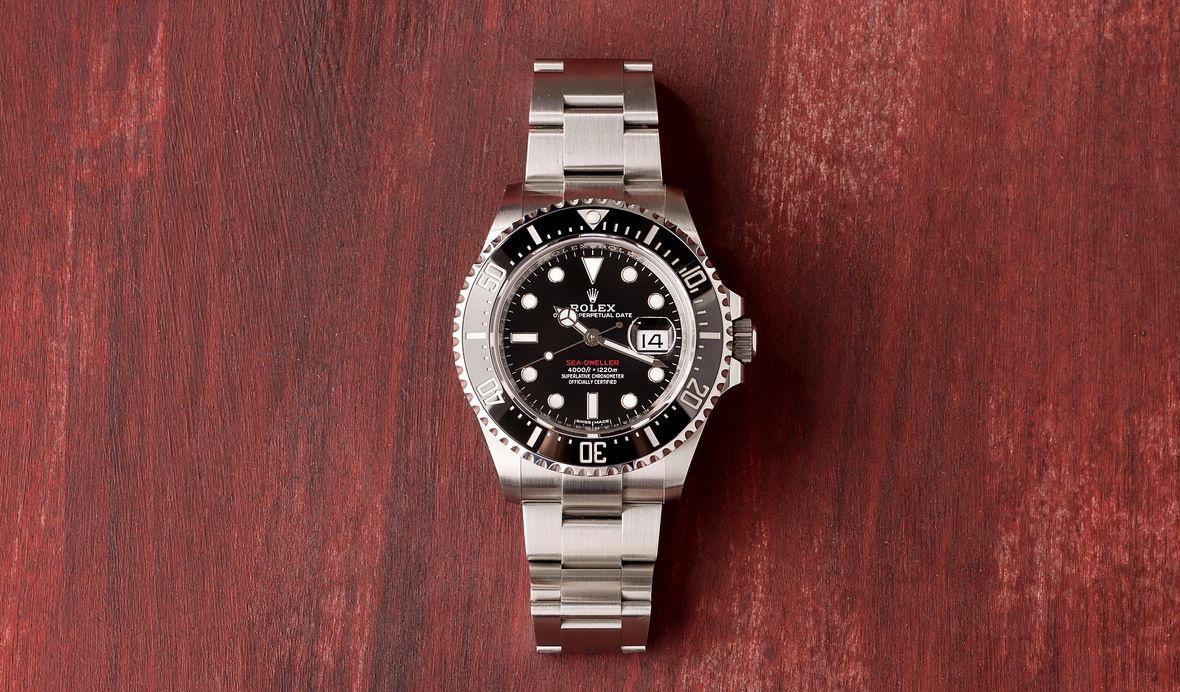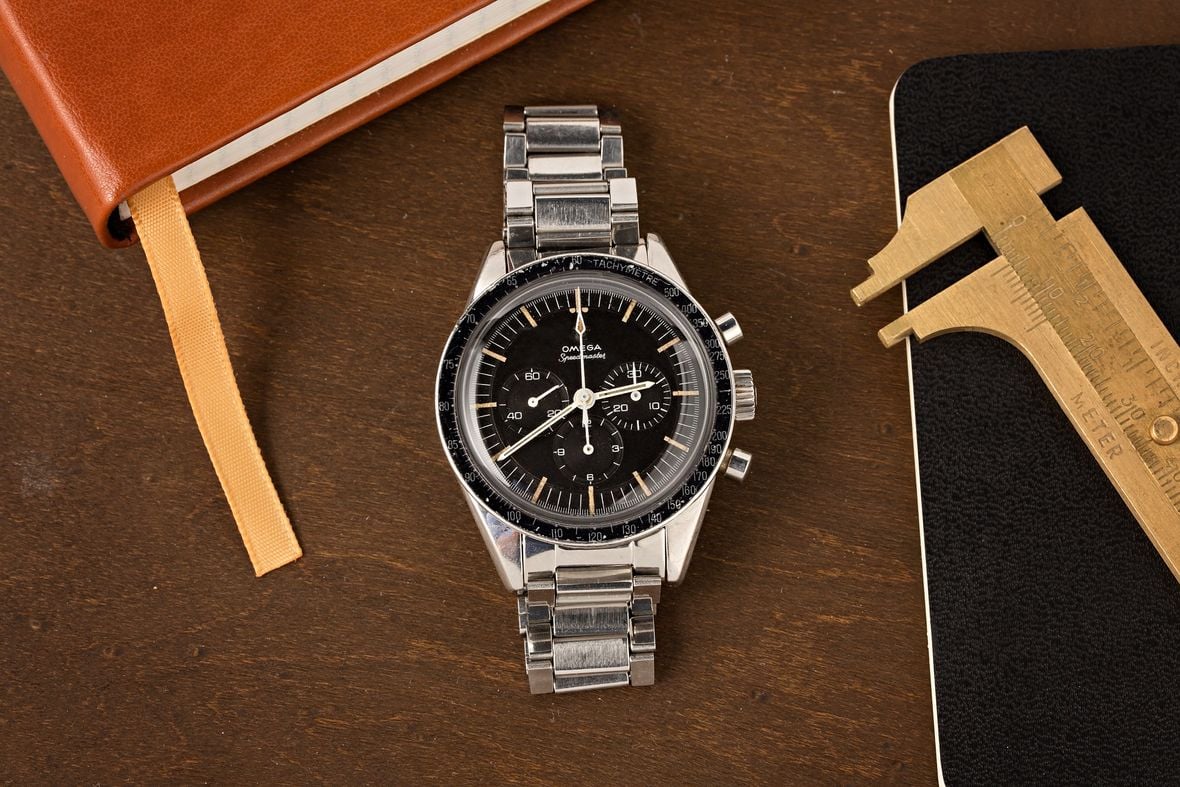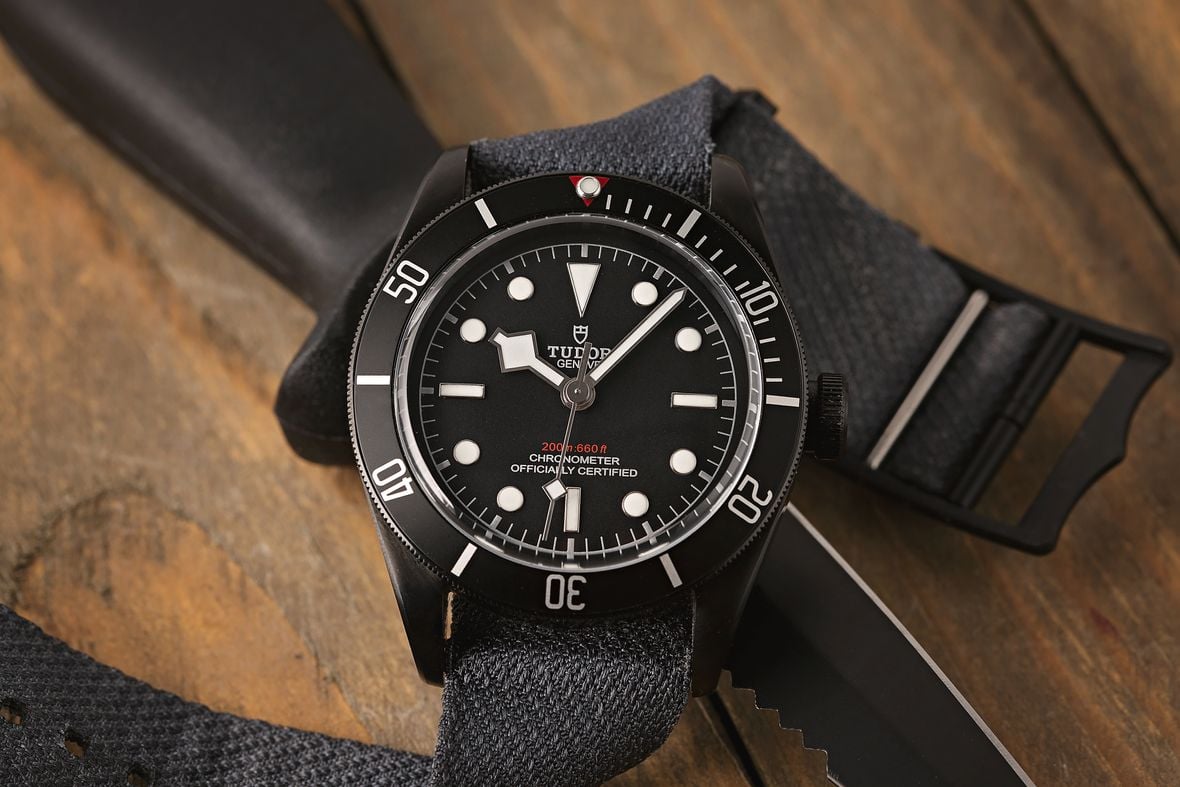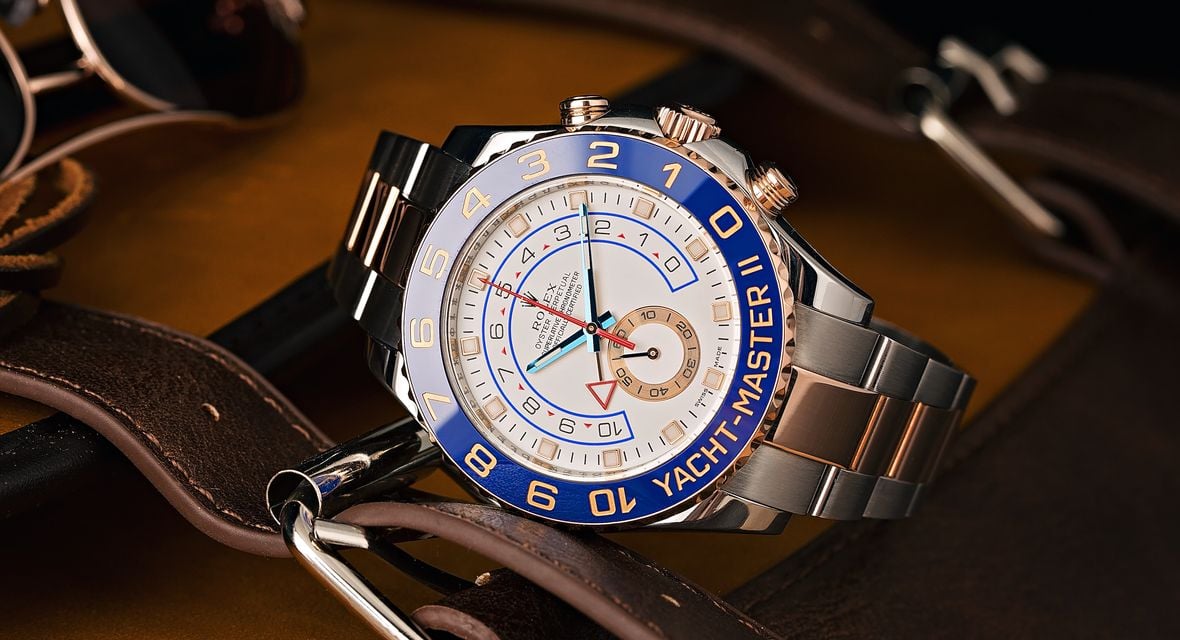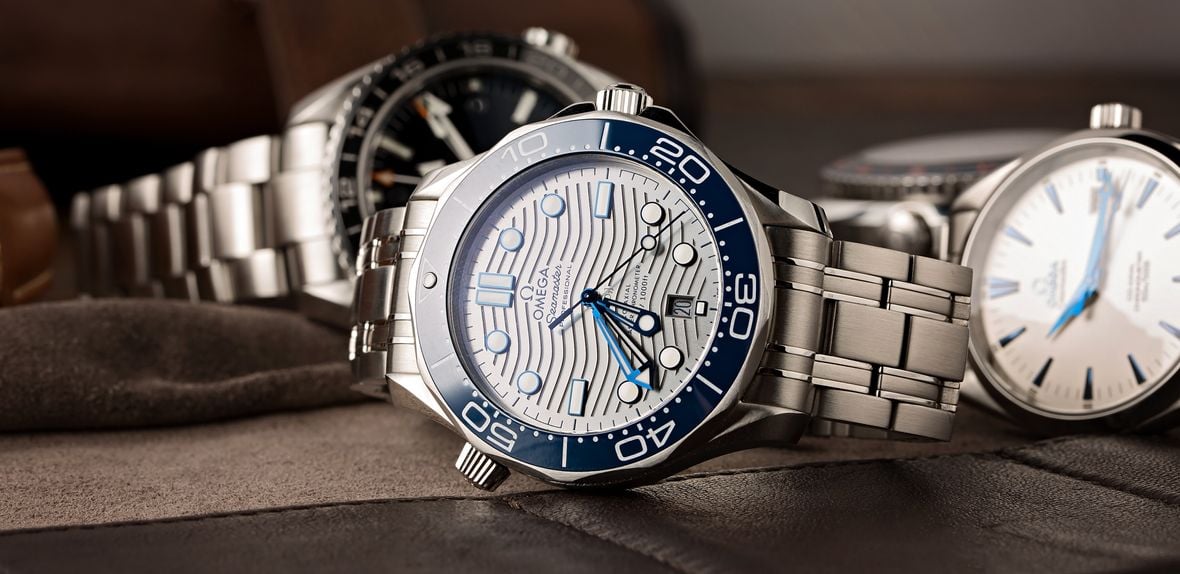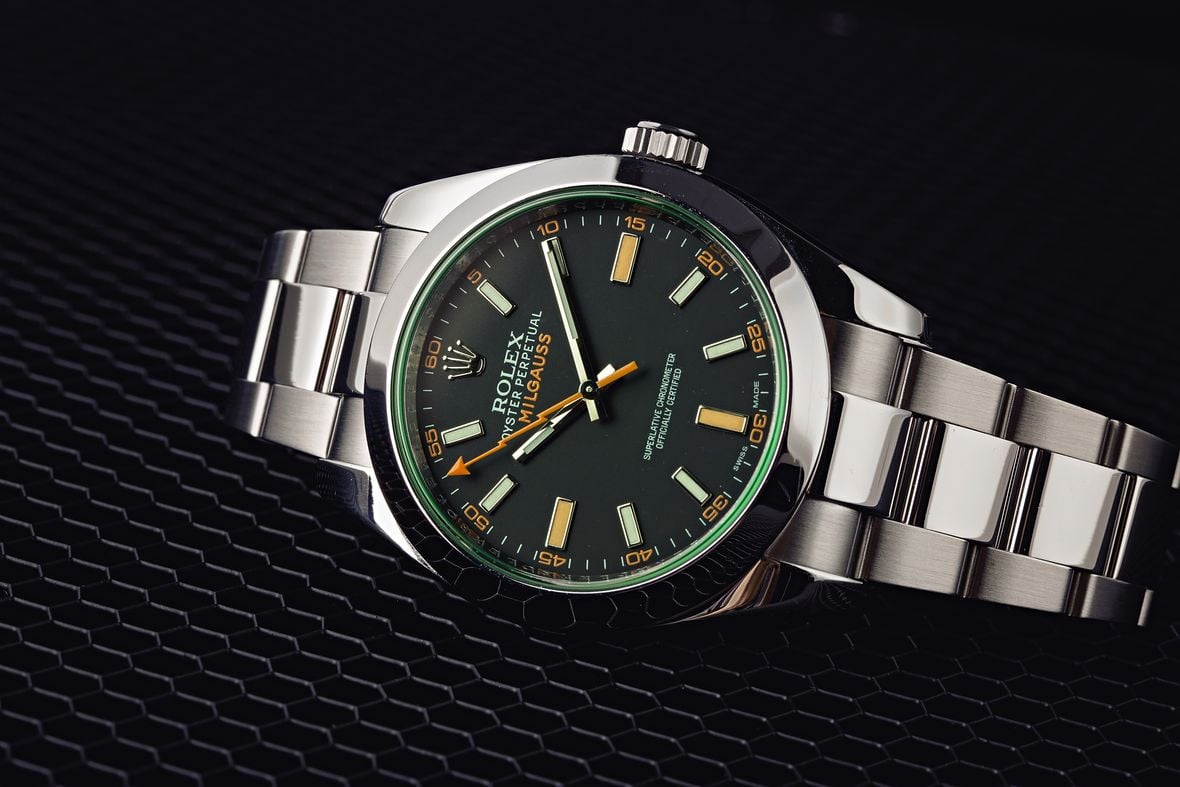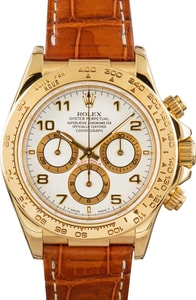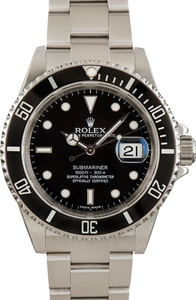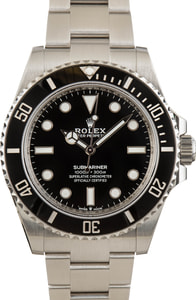Developed specifically for saturation divers, the Rolex Sea-Dweller collection not only offers a deeper water resistance rating than the Submariner but also comes fitted with a helium escape valve. The Sea-Dweller has been a part of the Rolex catalog for over five decades and it has undergone several important updates over the course of its history.
If you’re in the market for this professional dive watch or simply want to brush up on your knowledge, delve into our Rolex Sea-Dweller ultimate buying guide to learn everything you need to know about this purpose-built watch designed specifically for the world of commercial saturation diving.
Rolex Sea-Dweller
Sea-Dweller Key Features:
– Release Year: 1967
– Case Diameter: 40mm or 43mm
– Material: Stainless Steel or Two-Tone (Stainless Steel & Yellow Gold)
– Functions: Time w/ Running Seconds, Date Display, Helium Escape Valve
– Dial: Black w/ Luminous Hour Markers
– Bezel: Unidirectional or Bidirectional, Black Aluminum or Ceramic Insert w/ 60-Minute Scale
– Lume: Tritium, Luminova, Super-LumiNova, or Chromalight
– Crystal: Acrylic (Domed) or Sapphire (Flat)
– Movement: Rolex Caliber 1575, 3035, 3135, or 3235
– Water Resistance: 2,000 feet (610 meters) or 4,000 feet (1,220 meters)
– Strap/Bracelet: Oyster Bracelet
Click here to learn the difference between the Rolex Submariner and the Rolex Sea-Dweller.
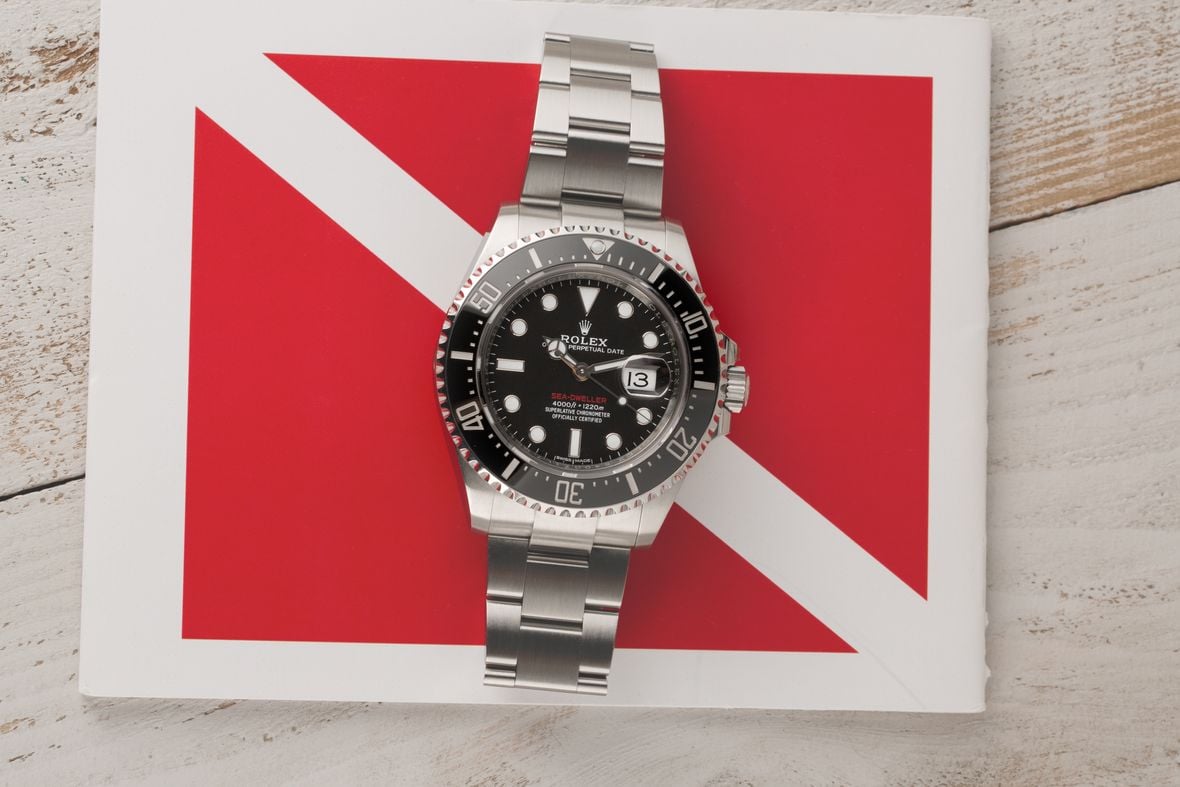
A Brief History of the Rolex Sea-Dweller
To understand the Sea-Dweller, we first must understand the history of Rolex’s pursuit of waterproof timepieces. In 1926, Rolex presented the Oyster watch, which was hermetically sealed thanks to a structure consisting of a screw-down winding crown, caseback, and crystal. Since then, the Oyster has become the backbone of Rolex’s catalog and serves as a basis for all water-resistant Rolex watches.
Rolex launched the Submariner diving watch in 1953, where the timepiece’s Oyster case came equipped with a rotating bezel graduated to 60 minutes to allow divers to track their immersion times. Furthermore, the Rolex Submariner was initially water-resistant to 100 meters (330 feet) and its dial and hands were luminous for maximum legibility underwater.
In 1960, Lieutenant Don Walsh and engineer Jacques Piccard made history when they submerged the experimental bathyscaphe, the Trieste, 10,916 meters (37,800 feet) deep into the Mariana Trench. Attached to the exterior of the Trieste was a Rolex Deep Sea Special experimental watch that emerged from the deep in pristine working order.
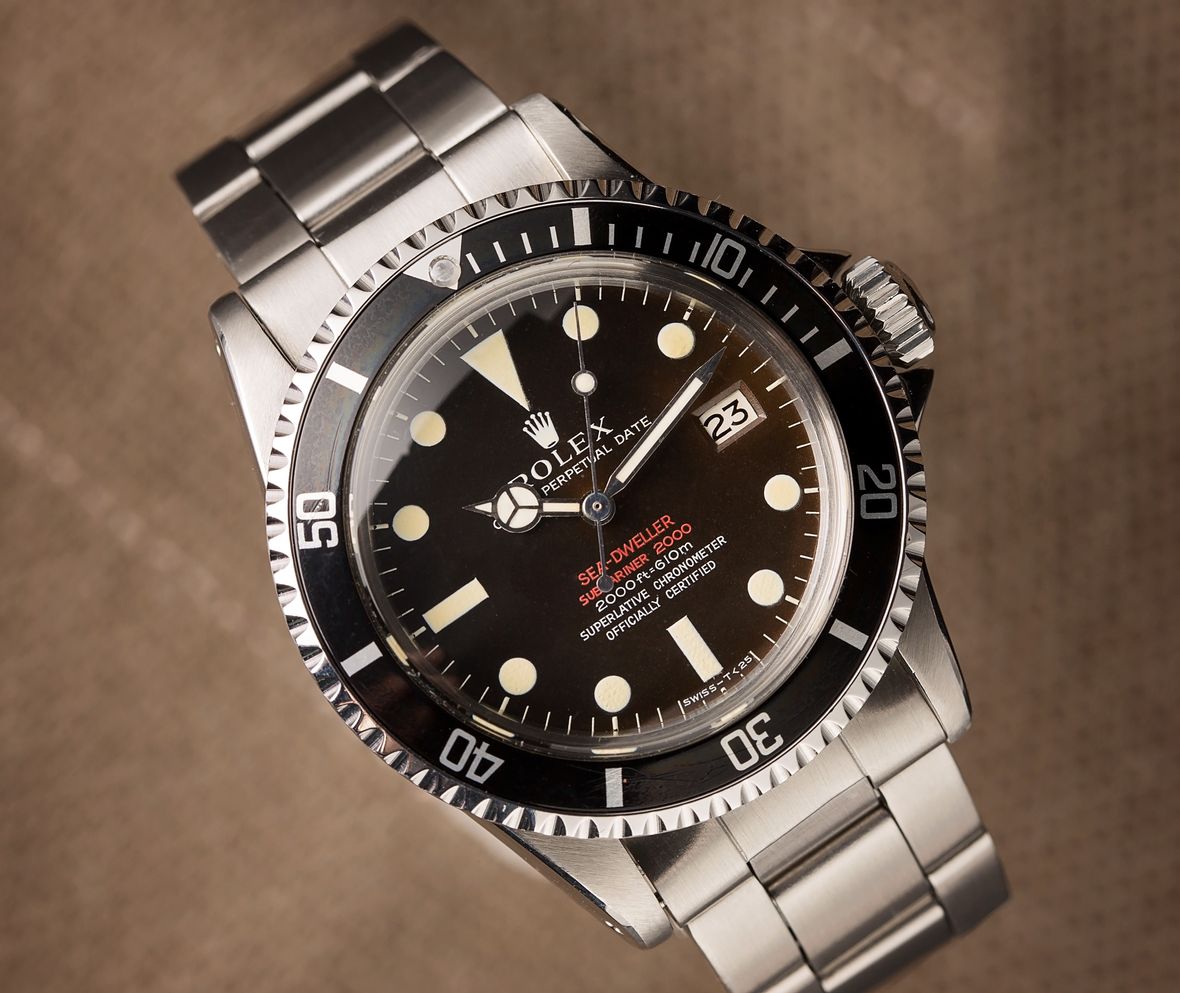
The Rolex Sea-Dweller and COMEX
Seven years later, Rolex introduced the Sea-Dweller specifically for saturation divers such as those that worked for the commercial diving company, Compagnie Maritime D’Expertises (COMEX.) While the Sea-Dweller looked similar to the Submariner of the era, it offered more than triple the water-resistance and also featured a helium escape valve (HEV) as a way to release trapped helium molecules that had made their way into the watch. Prior to the invention of the helium escape valve, saturation divers noted that the crystals would pop off their Submariner watches during decompression periods. The Rolex Sea-Dweller’s HEV completely solved that issue.
As is customary for the brand, Rolex continued to evolve and enhance the Sea-Dweller watch, focusing on greater water depth ratings and improved materials. Although Rolex stopped making the Sea-Dweller for a brief time in the 2010s, the cult-favorite saturation diver’s watch returned to the lineup after a five-year absence.
For most of its history, the Rolex Sea-Dweller was made from stainless steel and included a 40mm case. However, to celebrate the 50th anniversary of the watch in 2017, Rolex redesigned the Sea-Dweller to sport a larger 43mm case. Additionally, a couple of years later in 2019, a more luxurious Yellow Rolesor (two-tone steel/yellow gold) Sea-Dweller joined the collection.
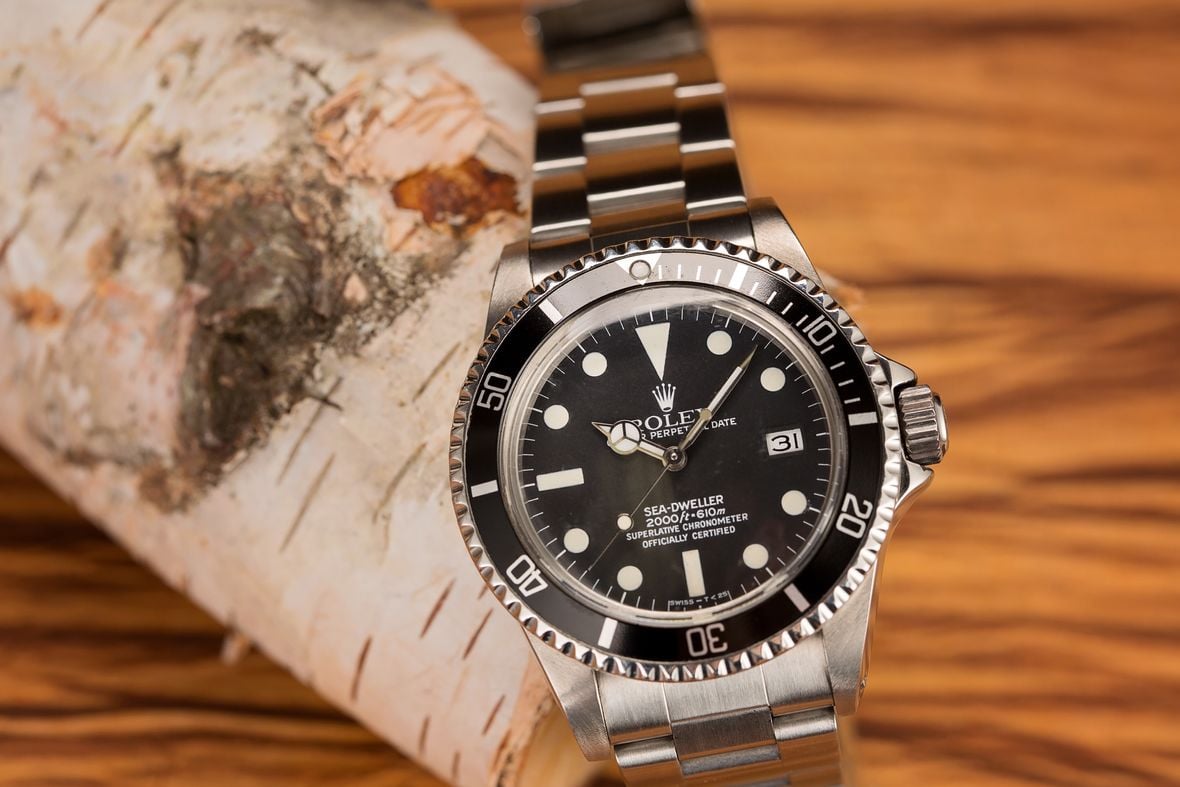
Rolex Sea-Dweller History Milestones
– 1967: Rolex introduces the first Sea-Dweller water-resistant to 2,000 feet.
– 1978: Rolex doubles the Sea-Dweller’s water-resistance rating to 4,000, fits it with sapphire crystal, and designs the bezel to be unidirectional.
– 2009: Rolex discontinues the Sea-Dweller.
– 2014: Rolex revives the Sea-Dweller with a new Cerachrom ceramic bezel.
– 2017: Rolex redesigns the Sea-Dweller to include a larger 43mm case, a Cyclops lens on the crystal, and new-generation movement.
– 2019: Rolex releases the first two-tone Sea-Dweller, combining steel and yellow gold.
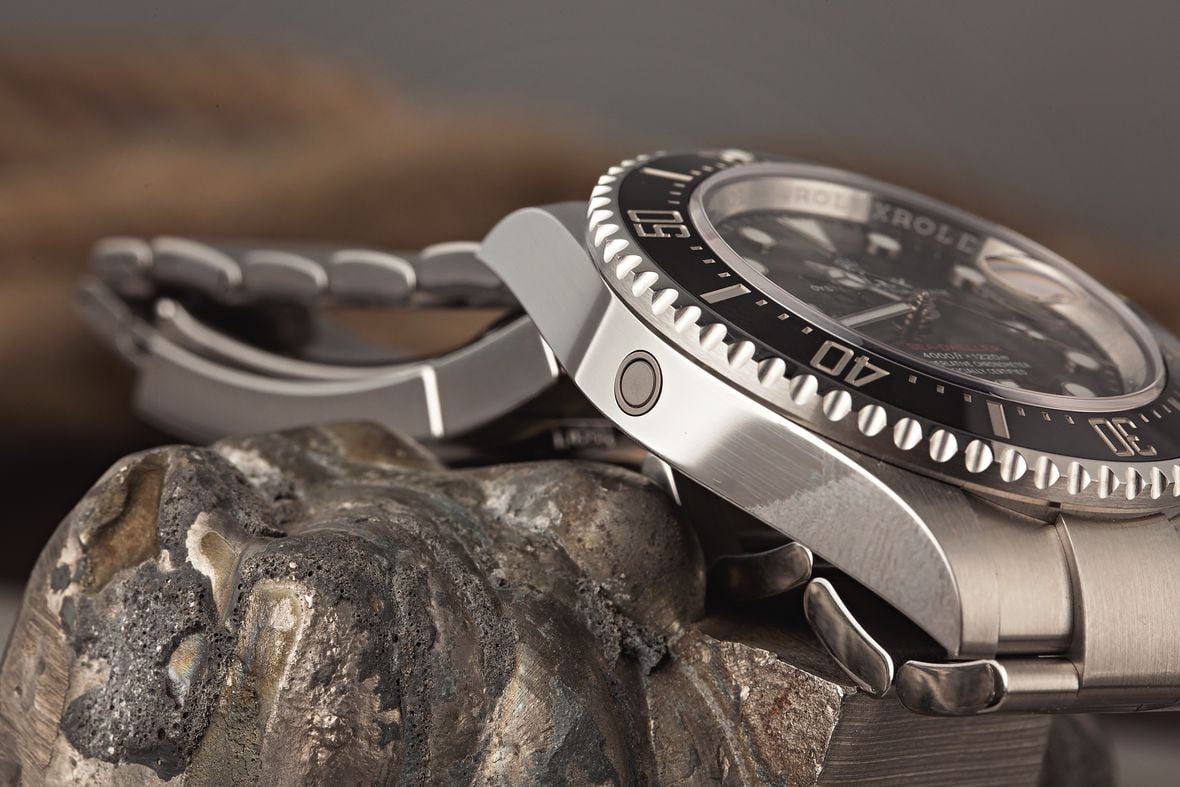
Rolex Sea-Dweller Models and Features
Regardless of the production era or specific reference number, all Rolex Sea-Dweller watches are dive watches with black rotating bezels marked to 60 minutes, luminous indexes and Mercedes-style hands, a date window at 3 o’clock, a helium escape valve at 9 o’clock, and an Oyster bracelet. However, there have been some significant upgrades along the way, and understanding how Sea-Dweller models differ will help you to decide which reference to buy.
Not including the Deepsea models, Rolex has made seven Sea-Dweller references over the last five decades, each offering various updates in either design, movements, or both. While the first two share a reference number, they’re different enough to be regarded as distinct models by collectors. You’ll also note some overlapping production periods and a few years where Rolex did not make any Sea-Dweller models at all.
– Sea-Dweller ref. 1665 “Double Red” (1967-1977)
– Sea-Dweller ref. 1665 “Great White” (1977-1983)
– Sea-Dweller ref. 16660 “Triple Six” (1978-1989)
– Sea-Dweller ref. 16600 (1989-2009)
– Sea-Dweller ref. 116600 (2014-2017)
– Sea-Dweller ref. 126600 (2017-Present)
– Sea-Dweller ref. 126603 (2019-Present)
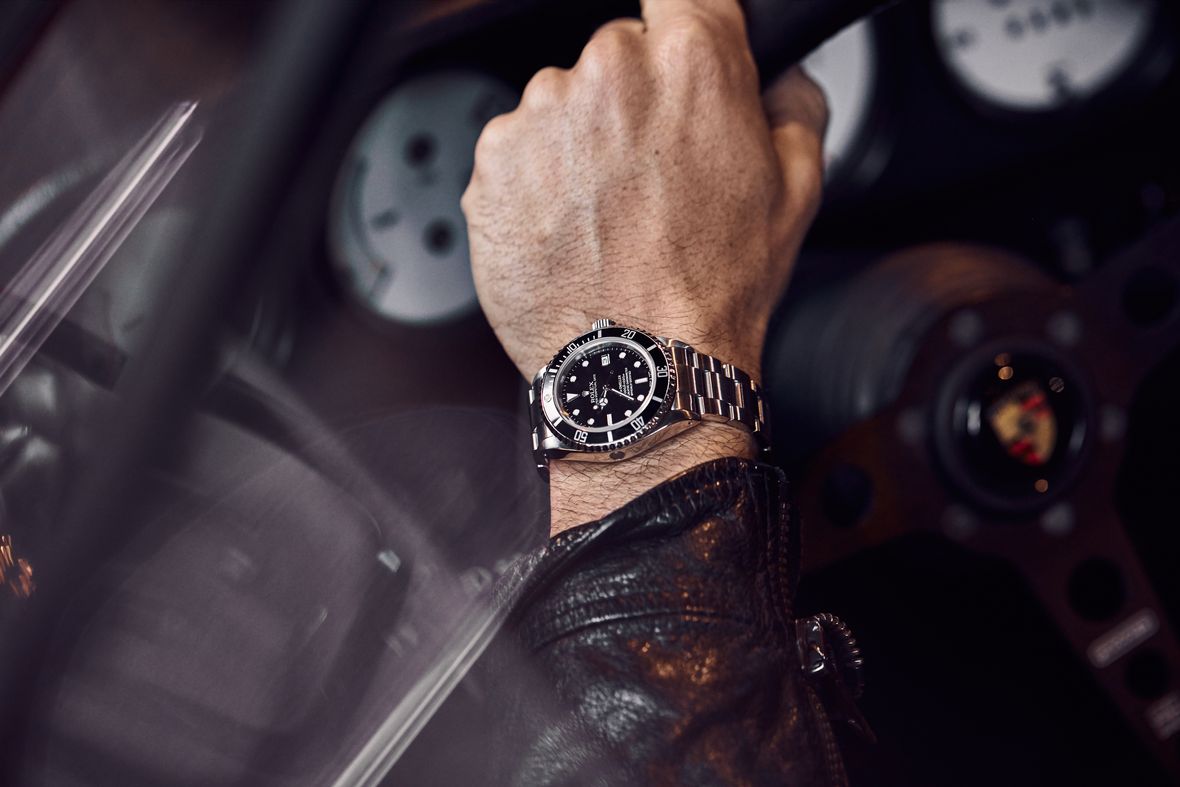
Rolex Sea-Dweller Size and Material Options
Until very recently, the classic Sea-Dweller was exclusively made in stainless steel and featured a 40mm case size. However, this changed in 2017 with the release of the new Sea-Dweller ref. 126600 with a 43mm case and then again in 2019 with the release of the new steel and yellow gold (known as Yellow Rolesor) Sea-Dweller ref. 126603.
40mm Sea-Dweller
– Sea-Dweller 1665
– Sea-Dweller 16660
– Sea-Dweller 16600
– Sea-Dweller 116600
43mm Sea-Dweller
– Sea-Dweller ref. 126600
– Sea-Dweller ref. 126603
It’s also worth noting that the type of steel Rolex has used to make the Sea-Dweller has also evolved. The Sea-Dweller was among the first Rolex watches to use 904L stainless steel and the switch from industry-standard 316L steel to more corrosion-resistant 904L steel occurred during the mid-1980s. Then in 2018, Rolex began using the term “Oystersteel” to describe the specific 904L stainless steel alloy it uses to craft its watches.
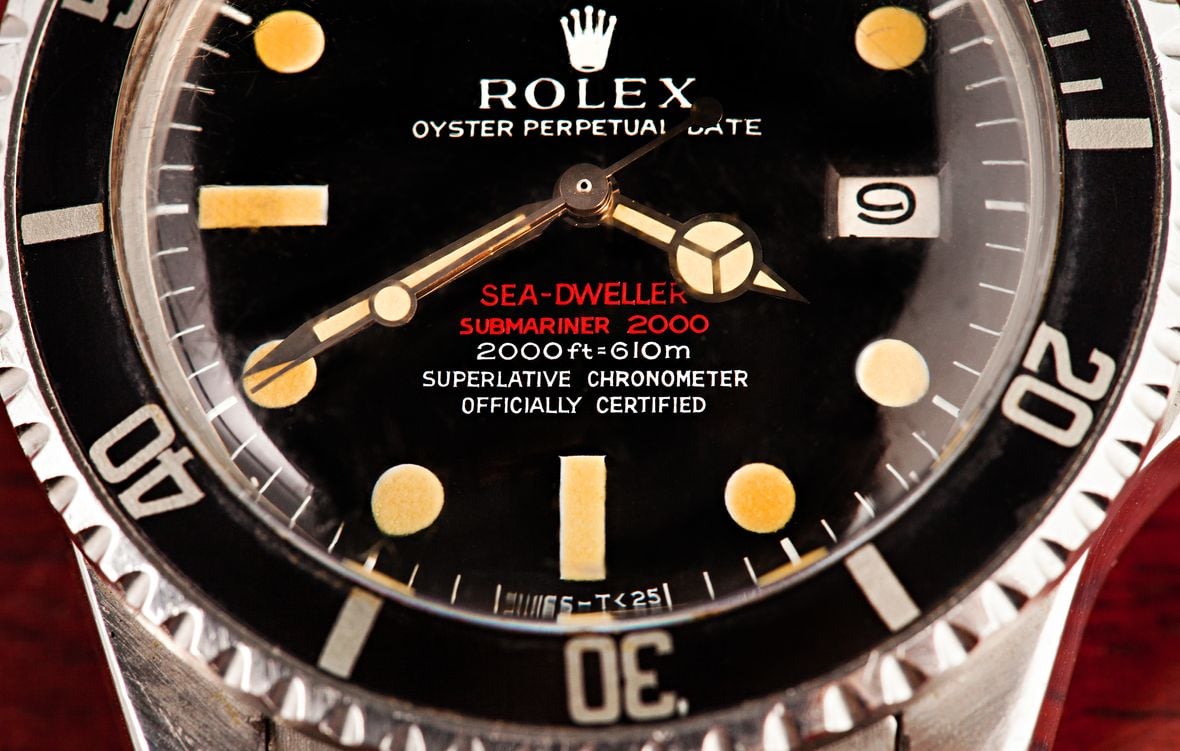
Rolex Sea-Dweller Dials
When the Sea-Dweller ref. 1665 made its official debut in 1967, its black dial featured two lines of red text (“Sea-Dweller” and “Submariner 2000”) that paved the way for its popular nickname among collectors: the Double Red Sea-Dweller or DRSD for short. There are slight dial variations of the DRSD, generally classified by collectors from Mark 0 to Mark 7.
A decade later, Rolex replaced the red text variant with an all-white dial version of the ref. 1665, aptly nicknamed the “Great White.” Along with dial variations that are classified from Mark 1 to Mark 4, there are also the “COMEX” dial variants, which were destined for the Compagnie Maritime D’Expertises crew.
Regardless of the text color, both versions of the Sea-Dweller 1665 housed matte black dials punctuated with painted luminous plots at the hour markers and a date window at 3 o’clock. Early versions of the subsequent Sea-Dweller ref. 16660 continued a similar dial design until Rolex switched to glossy black dials with applied hour markers with white gold surrounds part of the way through the reference 16660’s production period.
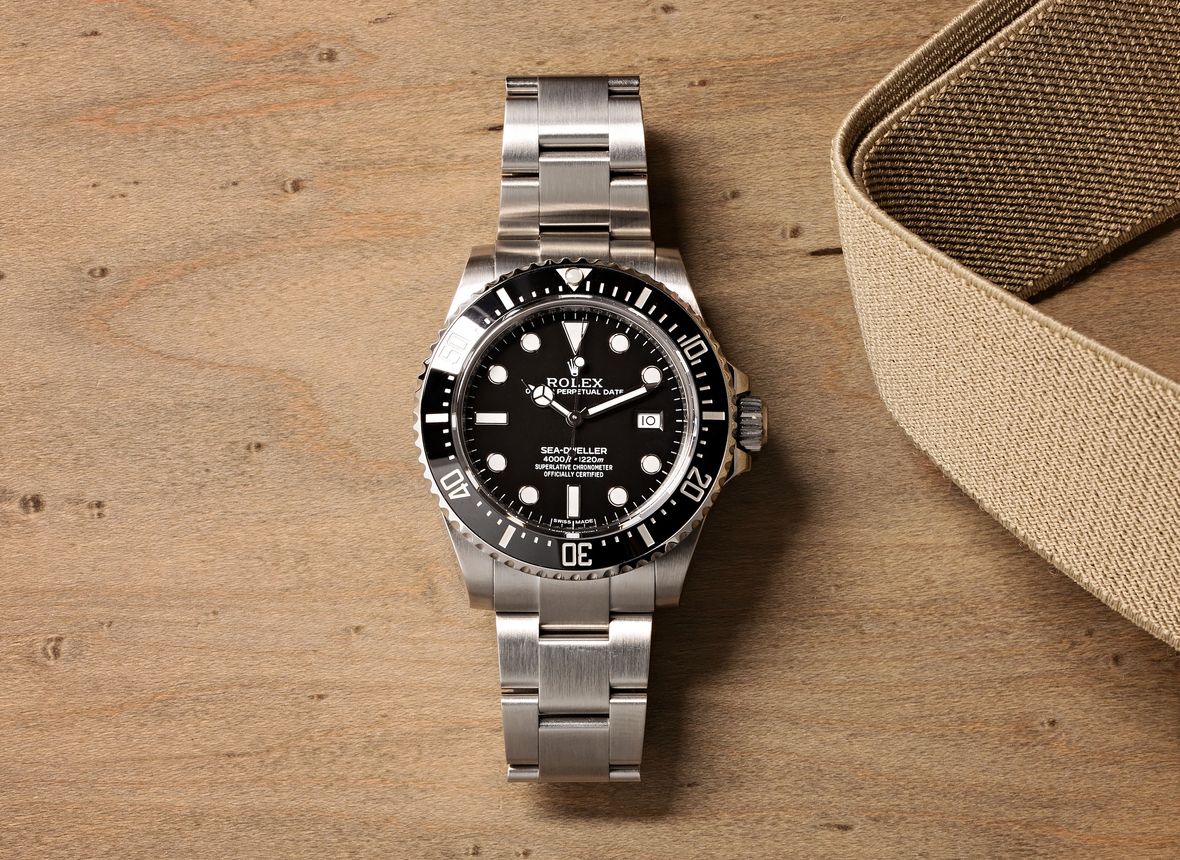
Rolex Sea-Dweller Lume
As with all its watches, Rolex also updated the luminous material on the dials of the Sea-Dweller beginning with tritium followed by Luminova in the mid-1990s then Super-LumiNova, and then finally, Rolex’s in-house Chromalight. Chromalight is Rolex’s proprietary lume that glows blue in the dark instead of the usual green hue of Luminova and Super-LumiNova. Depending on its production year, the Sea-Dweller 16600 is the one reference that can have either tritium, Luminova, or Super-LumiNova. A quick way to tell the difference is to look at the marking under the 6 o’clock position:
– T Swiss T<25 = Tritium
– Swiss = Luminova
– Swiss Made = Super-LumiNova
In honor of the inaugural model, the 50th Anniversary Sea-Dweller ref. 126600 also includes the “SEA-DWELLER” name in red text. On the other hand, the yellow Rolesor Sea-Dweller ref. 126603 includes the “SEA-DWELLER” name in gold letters on the dial to match the other gold details of the watch.
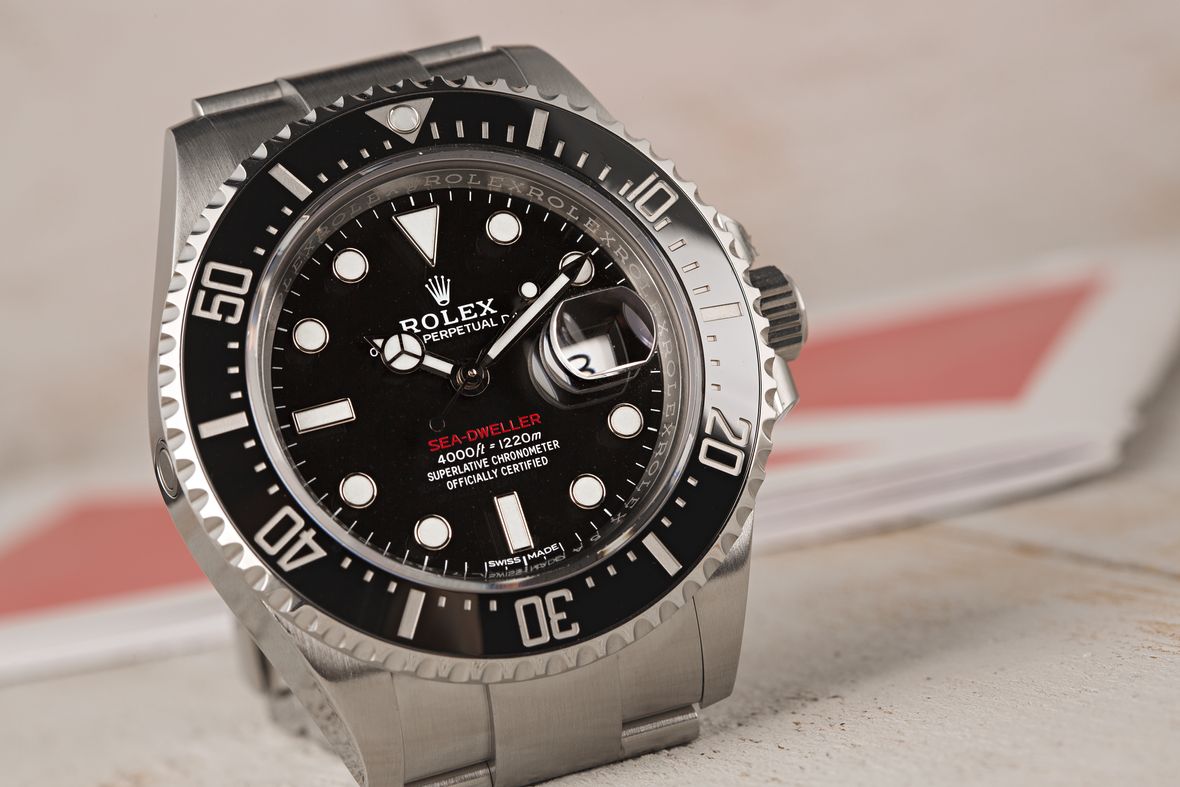
Rolex Sea-Dweller Crystals and Bezels
Another variation you’ll see across different Sea-Dweller references is the type of crystal used to protect the dial. The Sea-Dweller ref. 1665 – both the Double Red and the Great White – come equipped with a thick domed acrylic crystal. However, when Rolex introduced the Sea-Dweller ref. 16660, acrylic was replaced with a scratch-resistant sapphire crystal – the same material used on current production models.
One important detail to point out is that for most of its history, the Rolex Sea-Dweller did not have the bubble Cyclops magnification lens affixed to the crystal – despite the fact that it had a date window. This was simply because the Cyclops would not have held up against the crushing pressures found in ultra-deep waters. However, with the release of the latest Sea-Dweller 12660x references, Rolex’s professional saturation diver’s watch now includes a Cyclops over the date window, and it is now just the Deepsea Sea-Dweller that lacks this signature Rolex feature.
While all Sea-Dweller watches include a black 60-minute bezel, the type of material used, the rotation direction, and the marking style have changed over the years. The Rolex Sea-Dweller initially had a bidirectional bezel with an aluminum bezel insert. The scale featured 1-minute markings until 15 minutes, followed by alternating numerals and batons placed at every 5 minutes. The first unidirectional bezel appeared on the Sea-Dweller ref. 16660 “Triple Six” model, which is a safer mechanism that prevents underestimating immersion times.
When Rolex revived the Sea-Dweller in 2014 in the form of the ref. 116600, the watch not only came fitted with a Cerachrom (Rolex’s proprietary ceramic material) bezel but it also included markings at each of the 60 minutes – similar to vintage Milsub watches.
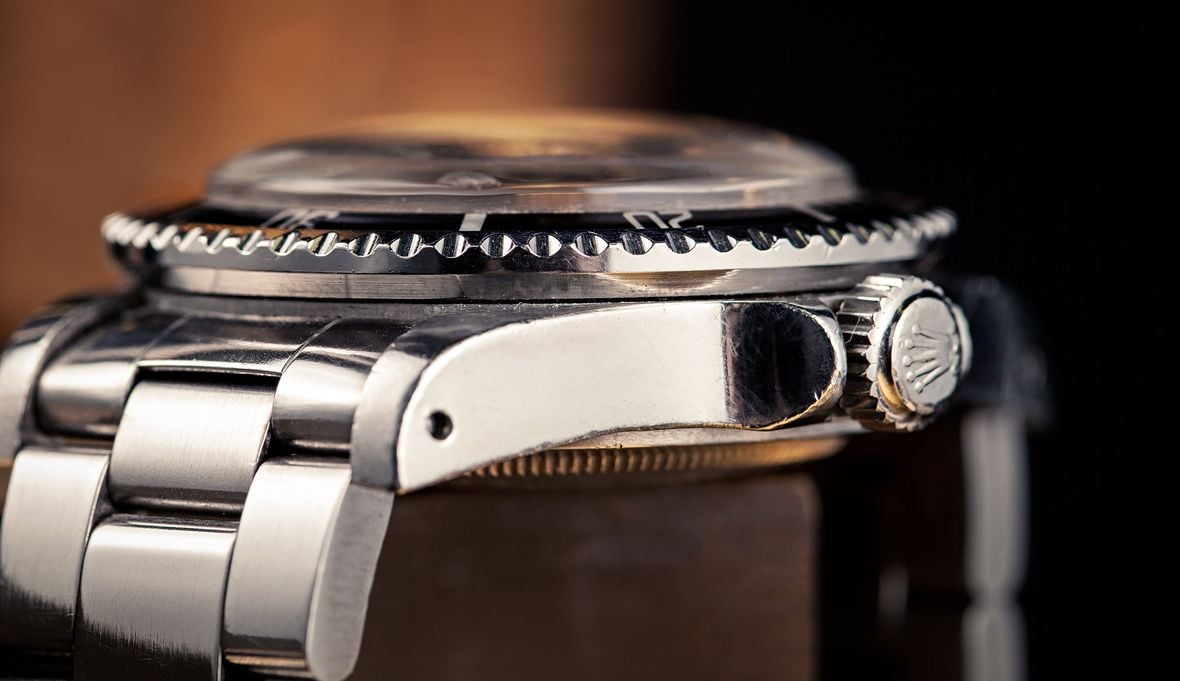
Rolex Sea-Dweller Bracelets and Clasps
Although Rolex has always paired the Sea-Dweller with a robust three-link Oyster bracelet, just like almost every other part of the watch, the bracelet and clasp have also undergone several changes and updates. To prevent accidental opening of the clasp, Rolex designed a special clasp for the Submariner and Sea-Dweller in 1969 featuring an additional security buckle over the folding closure. This particular Sea-Dweller Oyster bracelet also benefited from a diver’s extension on the clasp to allow the wearer to lengthen the bracelet to fit over a thick diving suit.
Rolex introduced sturdier solid end links (SELs) on the Sea-Dweller’s Oyster bracelet in the mid-1970s before eventually rolling out that design detail to other models with Oyster bracelets. With that in mind, even the SEL bracelets still had hollow center links, and it would not be until the subsequent generation that the Sea-Dweller received a bracelet with completely solid links.
One of the biggest updates to the Rolex Sea-Dweller’s Oyster bracelet occurred on the ref. 116600, which featured solid links throughout the entire bracelet in addition to the Glidelock extension clasp to lengthen the bracelet in 2mm increments, up to a total 20mm. Additionally, there’s also the Fliplock extension system, which instantly extends the bracelet by another 26mm to allow the Sea-Dweller to even fit over thick drysuits.
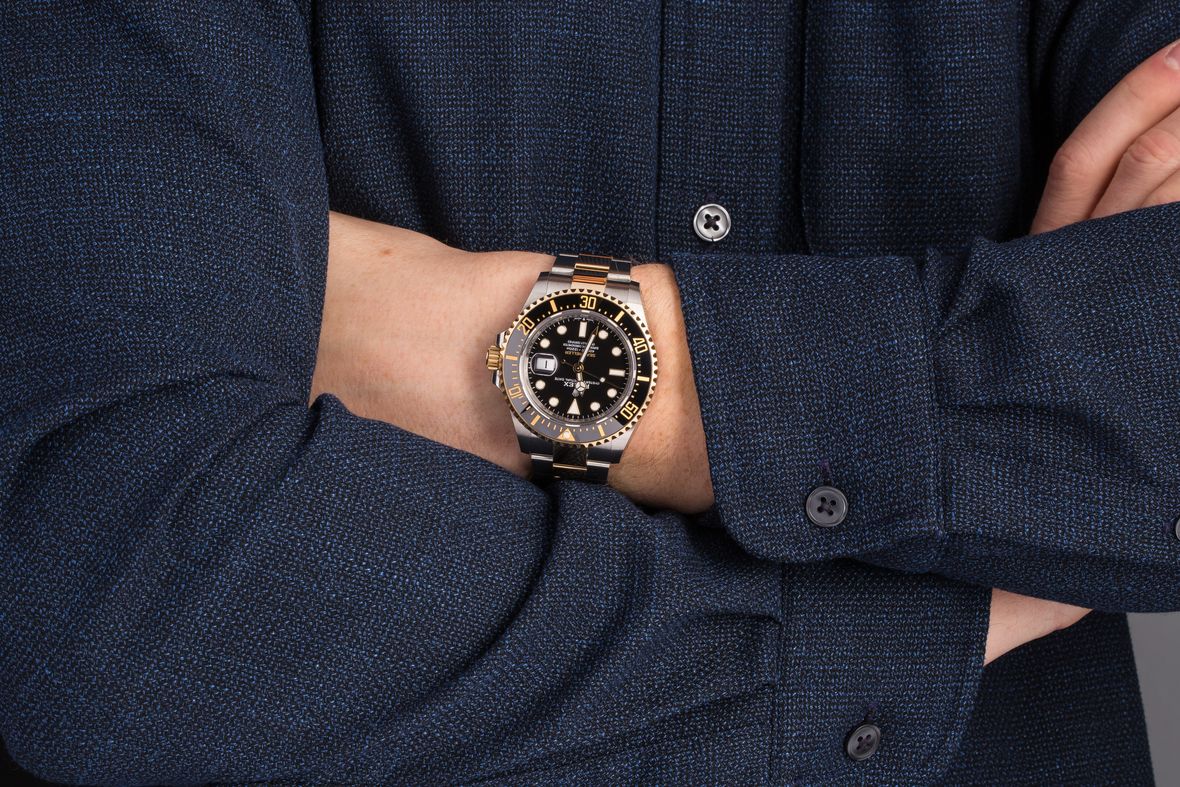
Rolex Sea-Dweller Movements
All Rolex Sea-Dweller watches run on automatic movements that power the time and date functions. Over the course of the Sea-Dweller’s history, Rolex has continuously updated its ultra-professional diver to feature the latest in-house movement technology.
However, regardless of the specific reference or the movement that powers it, all Rolex Sea-Dweller watches are time-and-date models. With that in mind, the caliber inside the watch depends on the particular reference, and each caliber brought along mechanical improvements.
– Sea-Dweller ref. 1665 – Caliber 1575
– Sea-Dweller ref. 16660 – Caliber 3035, introduced quickset date, 42-hour power reserve
– Sea-Dweller ref. 16600 and 116600 – Caliber 3135, 48-hour power reserve
– Sea-Dweller ref. 126600 and 126603 – Caliber 3235, 70-hour power reserve
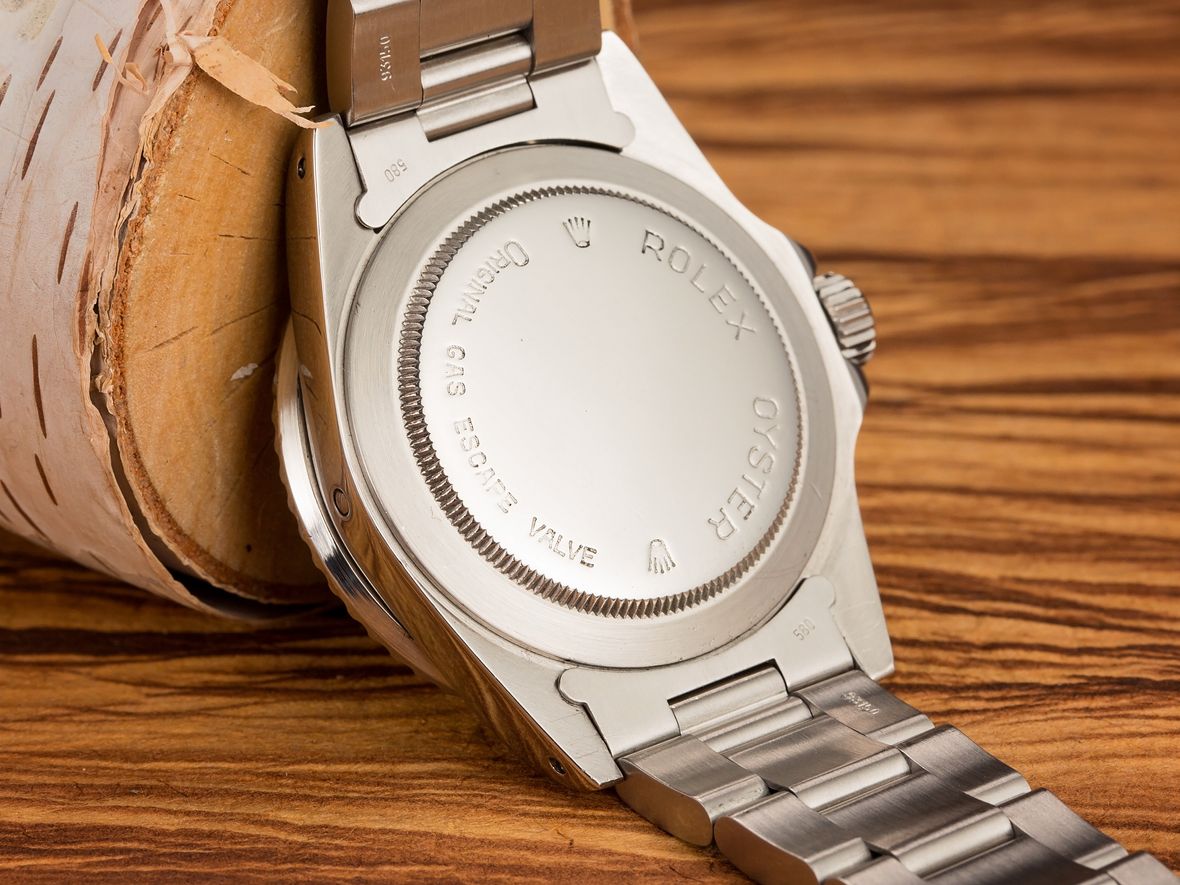
Rolex Sea-Dweller Comparison Chart
Now that we’ve explored each Rolex Sea-Dweller design feature in detail, here’s a quick chart outlining the major differences across all the different Sea-Dweller references.
| Reference | Production Years | Case Size & Materials | Bezel | Dial & Lume | Crystal | Water Resistance | Movement |
| 1665 “Double Red” | 1967-1977 | 40mm, 316L Steel | Bidirectional, Aluminum Insert | Matte Black, Tritium, Red text | Acrylic | 610m / 2,000ft | Cal. 1575 |
| 1665 “Great White” | 1977-1983 | 40mm, 316L Steel | Bidirectional, Aluminum Insert | Matte Black, Tritium, White text | Acrylic | 610m / 2,000ft | Cal. 1575 |
| 16660 | 1978-1989 | 40mm, 316L Steel | Unidirectional, Aluminum Insert | Matte Black / Glossy Black, Tritium | Sapphire | 1,220m / 4,000ft | Cal. 3035 |
| 16600 | 1989-2009 | 40mm, 904L Steel | Unidirectional, Aluminum Insert | Glossy Black, Tritium/Luminova/Super-LumiNova | Sapphire | 1,220m / 4,000ft | Cal. 3135 |
| 116600 | 2014-2017 | 40mm, 904L Steel | Unidirectional, Cerachrom Insert (1-minute marks) | Glossy Black, Chromalight | Sapphire | 1,220m / 4,000ft | Cal. 3135 |
| 126600 | 2017-Present | 43mm, Oystersteel | Unidirectional, Cerachrom Insert (1-minute marks) | Glossy Black, Chromalight, Red text | Sapphire w/ Cyclops | 1,220m / 4,000ft | Cal. 3235 |
| 126603 | 2019-Present | 43mm, Steel/Gold | Unidirectional; Cerachrom Insert (1-minute marks) | Glossy Black, Chromalight | Sapphire w/ Cyclops | 1,220m / 4,000ft | Cal. 3235 |
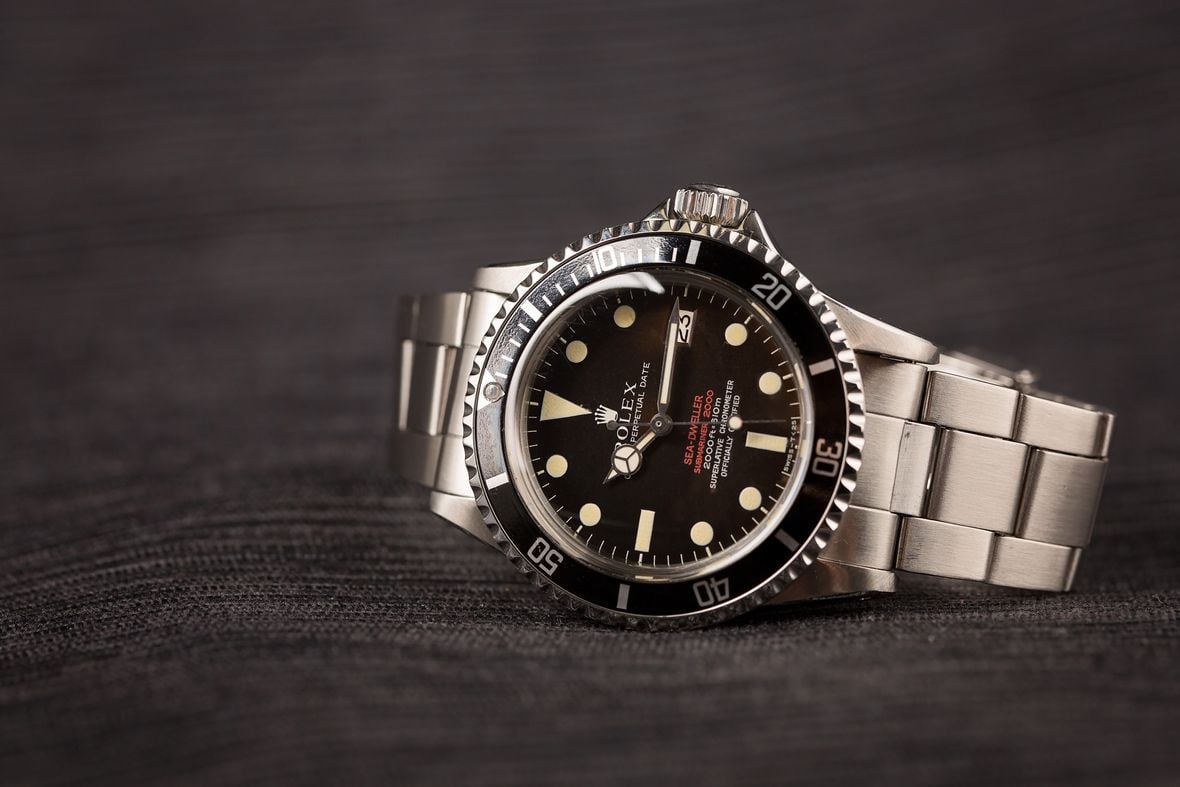
Rolex Sea-Dweller Price
So, how much does a Rolex Sea-Dweller cost? As expected, prices vary significantly depending on the reference and other sought-after features by collectors.
Retail Price vs. Secondhand Price for Current-Production Sea-Dweller Models
The 2021 manufacturing suggested retail prices of the Rolex Sea-Dweller are as follows:
– Oystersteel Sea-Dweller 126600: $12,950
– Yellow Rolesor Sea-Dweller 126603: $17,000
However, similar to almost every other modern Rolex sports watch, the Sea-Dweller is in incredibly high demand and sold out at retailers. Therefore, the watches command higher than retail prices on the secondary market. Expect to pay at least $14,500 for a pre-owned stainless steel Sea-Dweller 126600 and at least $18,500 for a pre-owned Sea-Dweller 126603 in two-tone steel and gold.
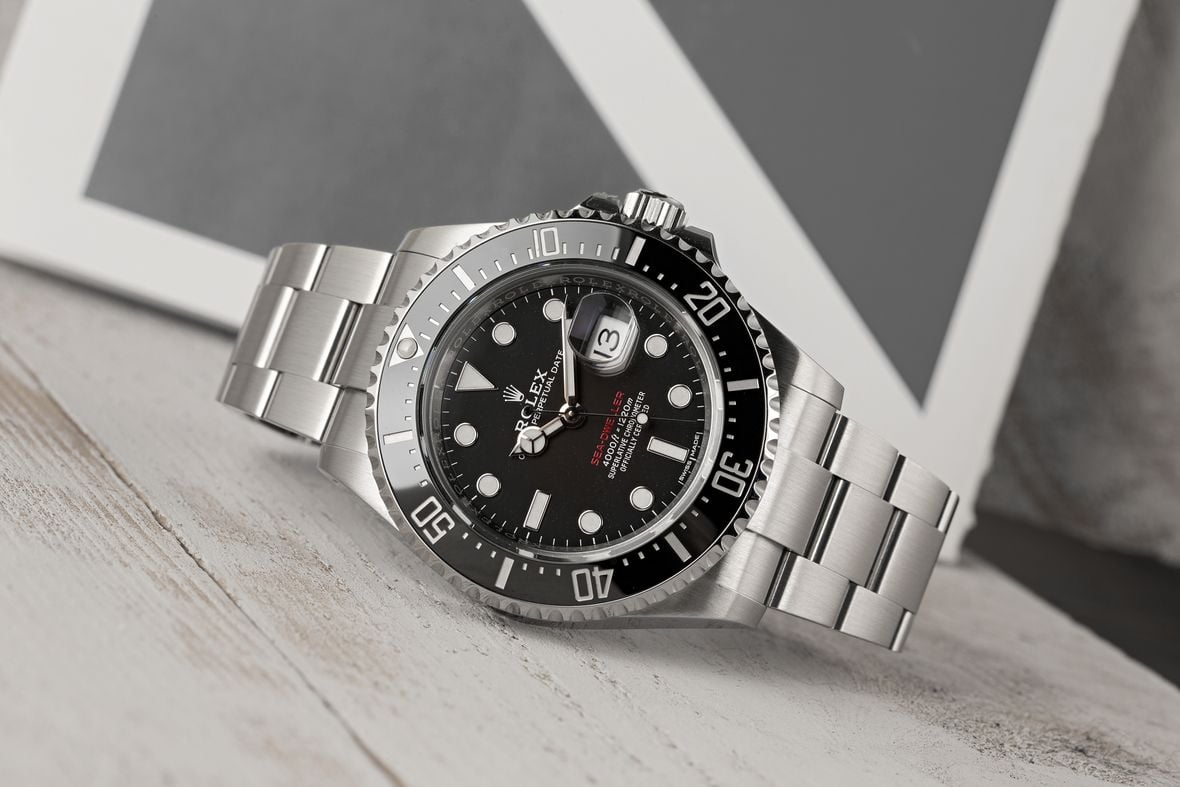
Prices for Discontinued and Vintage Sea-Dweller Models
Among all the discontinued Rolex watch references, the DRSD variation of the ref. 1665 is the most collectible. However, it’s important to note that DRSD prices vary depending on the type of dial (Mark 0 – 7). Prices start at $50,000 but can quickly escalate into the six-figure range for ultra-valuable examples. Generally speaking, earlier dial variants are more expensive than later ones, and examples in well-preserved conditions are always worth a premium.
Although the ref. 1665 “Great White” models typically cost less than their red-texted counterparts (starting around $20,000,) they are still highly collectible vintage Rolex watches. The most expensive versions are the COMEX signed ones since it is estimated that only 300 examples of the Sea-Dwellers ref. 1665 were made for COMEX between 1977 and 1981.
The least expensive Sea-Dweller is the ref. 16600, which can often be purchased for just under $10,000 on the pre-owned market. Fans of classic Rolex sports watches appreciate that the Sea-Dweller 16600 is the last model to include an aluminum bezel insert and the classic case proportions before the subsequent reference introduced the updated case design with noticeable thicker lugs and crown guards.
The discontinued Sea-Dweller 116600 is the only reference that combines a modern Cerachrom bezel with the once-traditional 40mm case size and no Cyclops on the crystal. This particular combination is a winning one for many Rolex enthusiasts. As a result of its desirable mix of features and short production period, the price of a pre-owned Sea-Dweller ref. 116600 starts at around $16,000 on the open market, which is slightly higher than the newer 43mm Sea-Dweller with a Cyclops lens.
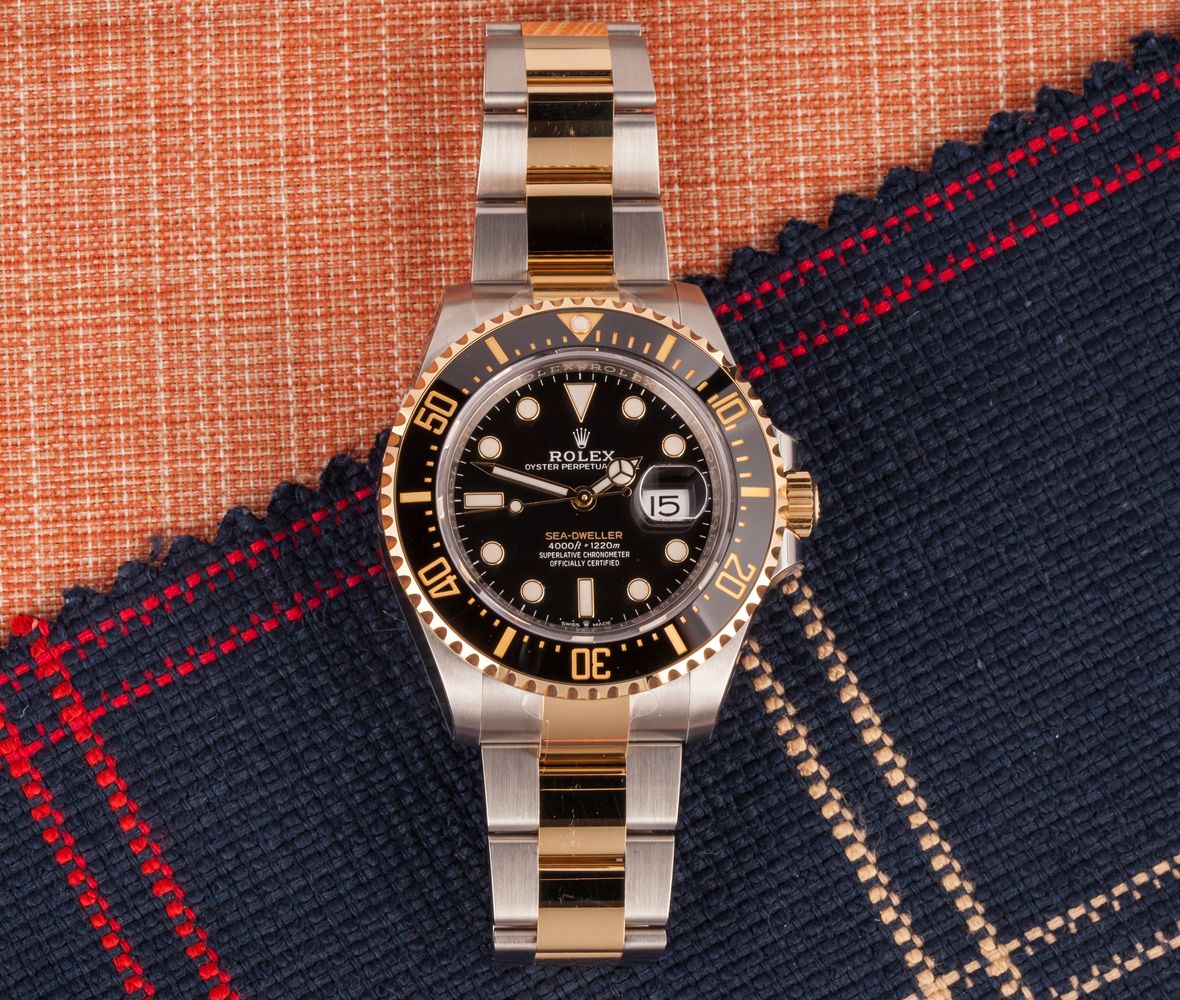
Which Rolex Sea-Dweller To Choose?
More robust than its famous cousin the Submariner yet not as extreme or imposing as the Deepsea, the Rolex Sea-Dweller sits comfortably in between and offers users all of the professional dive watch features necessary to accompany you to the bottom of the ocean. All Rolex Sea-Dweller watches make fantastic everyday timepieces and picking the right Sea-Dweller reference is a matter of deciding which design details are important to you.
The first consideration would be the size. If you favor the more restrained 40mm dimensions, then it would have to be an older Sea-Dweller model. However, if you prefer the generously proportioned 43mm case of the subsequent editions, then a current-production reference is for you.
After sizing considerations, you’ll need to drill down on the finer details, such as bezel type, dial style, and crystal material. However, since the Sea-Dweller is one of the more concise watch collections in Rolex’s catalog, finding the perfect Sea-Dweller for your wrist is a far more straightforward process than many of Rolex’s other lines of watches. And just like all timepieces made by Rolex, when choosing which Sea-Dweller reference is right for you, there truly are no wrong choices.
